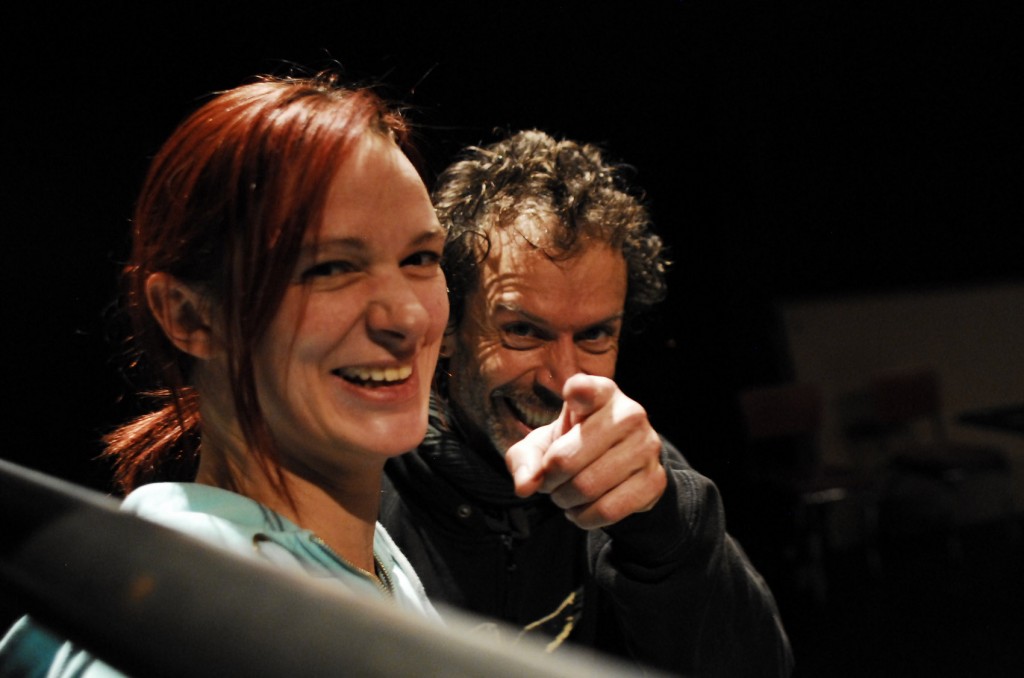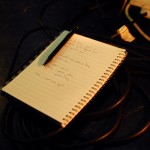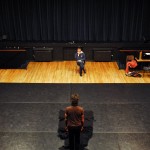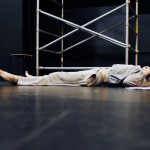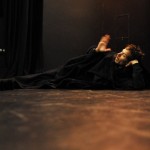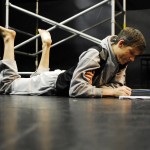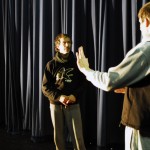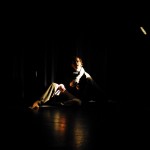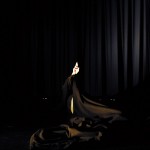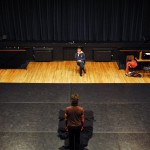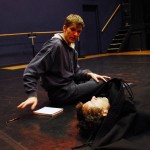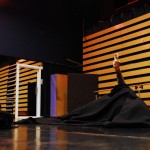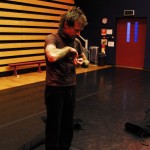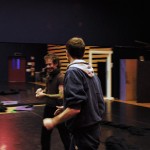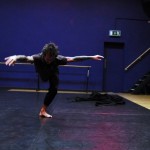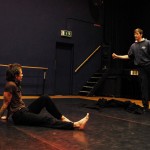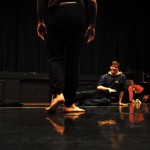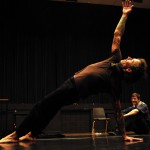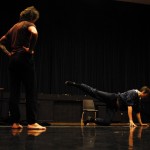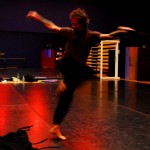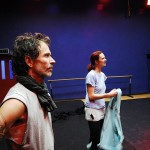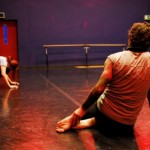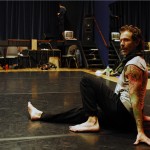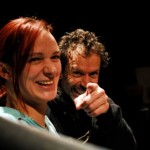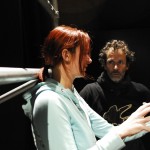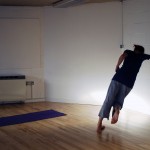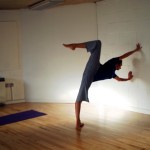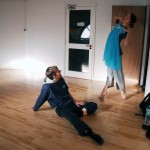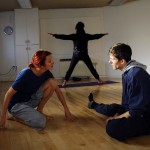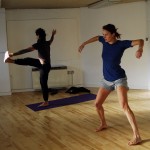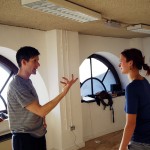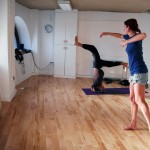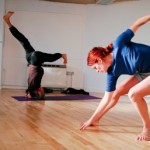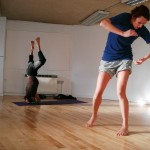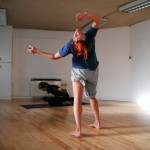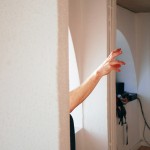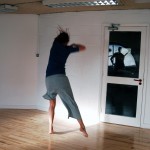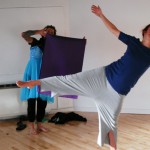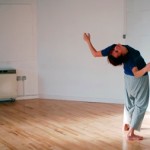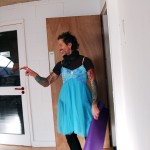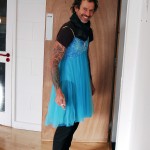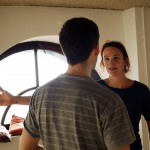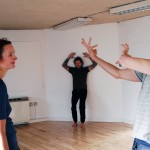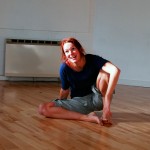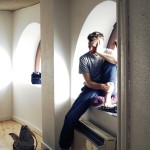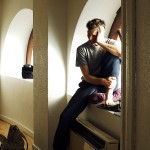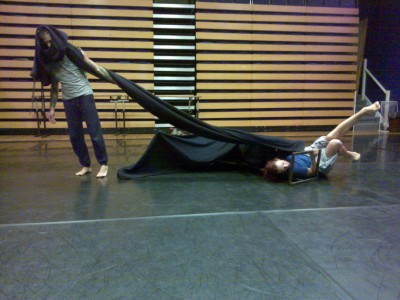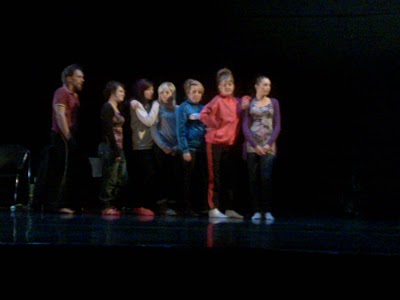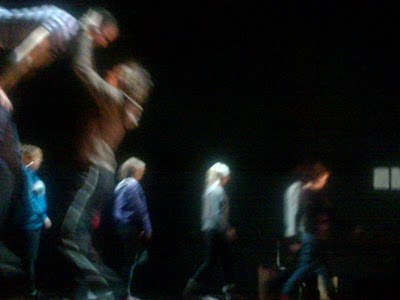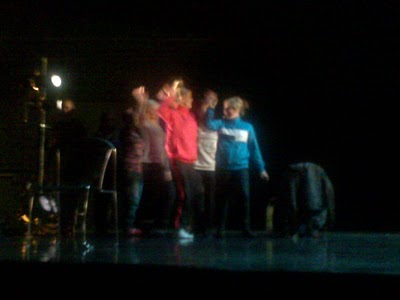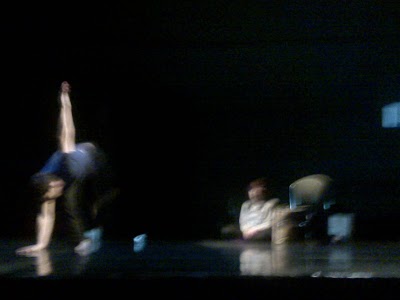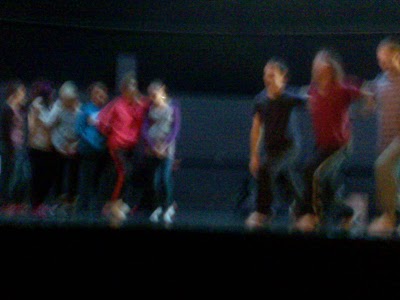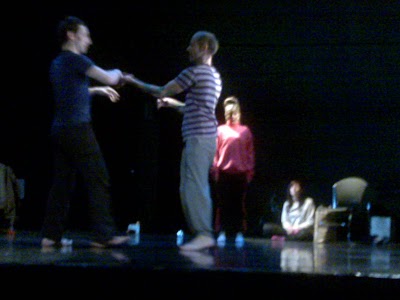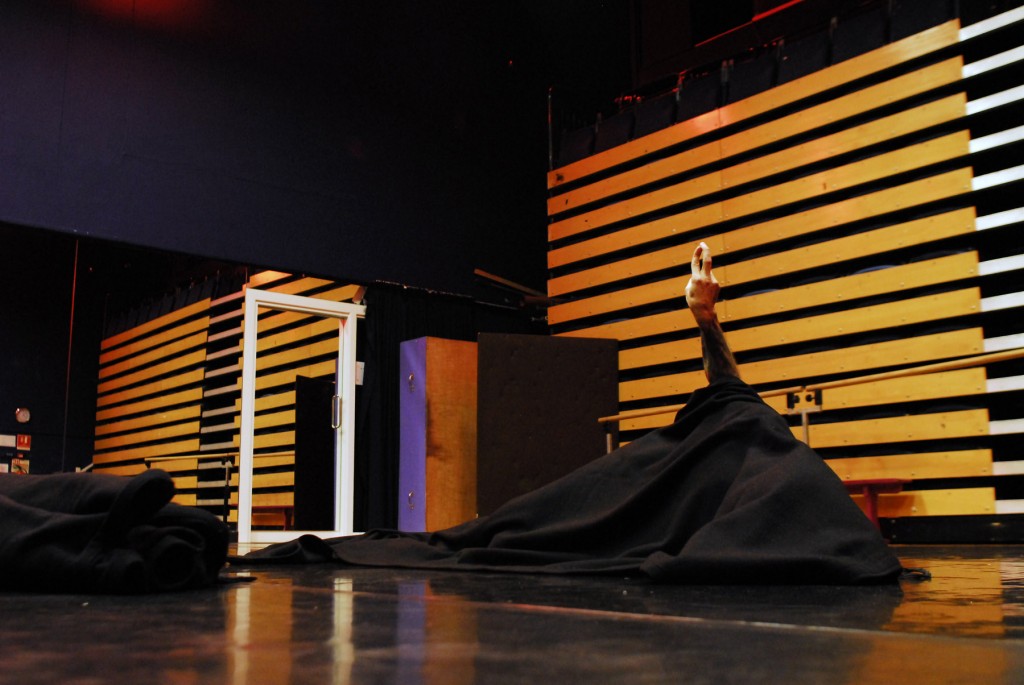 These are photographs by Andy Ferreira and feature the luminous Matthew Morris, the radiant Peggy Grelat-Dupont and me in the studio and stage of the Firkin Crane in Cork. I think Andy has managed to capture the playfulness, beauty and twinkle of these great performers. These aren’t so much images of the dancing, as images of its spirit. That’s a particular achievement given that so much of the time we rehearsed in darkness on the stage and didn’t give him much to work with. But from such challenges beauty blossoms
These are photographs by Andy Ferreira and feature the luminous Matthew Morris, the radiant Peggy Grelat-Dupont and me in the studio and stage of the Firkin Crane in Cork. I think Andy has managed to capture the playfulness, beauty and twinkle of these great performers. These aren’t so much images of the dancing, as images of its spirit. That’s a particular achievement given that so much of the time we rehearsed in darkness on the stage and didn’t give him much to work with. But from such challenges beauty blossoms
Label: Firkin Crane
Starlight: photos from the Blank Canvas residency
Starlight: Blank Canvas Residency, Firkin Crane Cork
I have the best intentions of blogging while I’m making work, imagining that it would be interesting to share the process of choreographing with its wrong turns and unexpected discoveries. I thought in particular that the research focus of the Blank Canvas residency at the Firkin Crane in Cork would allow me to write something as I went along. But it hasn’t happened so I’m writing now, after the fact.
I came to the residency with the intention of bringing to the theatre the approach that I’ve developed for site-responsive work (Tattered Outlaws, Match, Mo Mhórchoir Féin etc). I wanted to treat as a site, the stage of the Firkin Crane (an idiosyncratic space with its curved back wall). This approach is intended as an antidote to the largely commercial pressure to deliver choreographic product that slots into the interchangeable stage market places that theatres can represent, without acknowledging the physical, cultural and contextual specificity of each particular location. Every dancer knows that specificity when they adapt their performances to whichever stage they find themselves on (a steeper diagonal, a movement curtailed, a focus up or down depending on where the audience is placed in relation to the stage) but in general we work to maintain the fiction that the performance is the same in each venue.
The Open Niche tour was one way of changing that approach, acknowledging that each performance was specific and responsive to its location. To push that further in this residency I wanted to imagine the stage differently, wondering what it would be like to rediscover this defunct communication technology (it’s survived a long time but will the stage still work in 100 years time?)
I’ve worked with Paul McCarthy, a lighting designer who manages the Firkin Crane, to help me research these ideas through a solo for Matthew Morris. Paul remarked before how much energy is required to power the contemporary stage and how little, by comparison, is required to view a movie on a smartphone or even a laptop. This focus on energy made me think about the performer as source of energy, as heat, as movement, as sound and as radiant light. (These ideas have been incubating since the research with Roberta Lima and I hope we can pursue them during her residency in Chicago next year).
From these simple thoughts, embodied in Matthew’s luminous movement, we’ve made an experience for visitors. I don’t think of it as a performance for audience which already fixes a certain relationship of people to space. ‘Visitors’ allows me more possibilities to investigate participation and playful exploration. Keeping that in mind has allowed us to circumvent some of the usual stage conventions.
The working title of the piece is Starlight, a title I’ve had in my mind for Matthew’s solo since we worked together on a commission I did for Crux Dance Company. The piece, like starlight, is mostly viewed in the dark – a darkness that allows the delicate scintillation of the star’s radiance to be visible.
It is a new departure for me but felt right to pursue since it continues an investigation into the relationship I want to establish between my work and an audience/public/participants/visitors. It also continues to investigate space and architecture as well as the eastern-inflected dialectic of light and shade that my work in China has highlighted. Perhaps it remains aware of mortality and as I write that, the image of the sparrow flying through the mead hall from Bede’s Ecclesiastical History of the English People comes into my head:
Your Majesty, when we compare the present life of man on earth with that time of which we have no knowledge, it seems to me like the swift flight of a single sparrow through the banqueting-hall where you are sitting at dinner on a winter’s day with your thegns and counsellors. In the midst there is a comforting fire to warm the hall; outside the storms of winter rain or snow are raging. This sparrow flies swiftly in through one door of the hall, and out through another. While he is inside, he is safe from the winter storms; but after a moment of comfort, he vanishes from sight into the wintry world from which he came. Even so, man appears on earth for a little while; but of what went before this life or of what follows, we know nothing. Therefore, if this new teaching has brought any more certain knowledge, it seems only right that we should follow it.
My aunt, Helen, died while I was in Cork. She was a kind, generous and loving woman.
One final thought about Starlight comes from a text about scintillation or twinkling. The apparent on and off twinkling of a star’s light is not caused by the star’s failure to maintain a steady output of light and energy. It is atmospheric turbulence that momentarily re-routes that energy:
This does not mean that the star’s light is lost for that moment. It just means that it didn’t make it through your pupil to your retina – it went somewhere else in the vicinity of your pupil.
I’ll let you draw your own conclusions….
By the way, knowing who to work with is also an important choreographic skill and I’m pleased that it’s one I’m able to hone with Matthew (and Peggy Grelat Dupont).
Open Niche: Siamsa and Cork, the end for now
We finished Open Niche in Cork just before Easter and since then I’ve had a chance to go on holiday and stand down my brain from the state of high alert it needed to be in through March with its tour, its film-making and its preparations for performing in Shanghai next month.
Open Niche was deliberately demanding for me and for the team: we weren’t just fitting the existing Niche performance into each new venue but creating new performances in each location. Meeting new people, working out the new dynamic and the new creative possibilities required a lot of energy and, over the period of our tour, a great deal of stamina but this challenge was also an opportunity for my work to grow and for me to learn something new, rather than deliver over and over again a piece I made in 2008. Learning something new was the motivation for all of this work and effort.
The performance at Siamsa Tíre and the collaboration it allowed between my work and that of the National Folk Theatre was illuminating because of the ready connections that could be made between the extracts from the Siamsa repertoire that we used and some of the sections of Niche. Of course I knew that I’d used Eastern European folk dance forms in the creation of Niche but the weaving, spinning and interlinking made perfect sense in the Siamsa context. (The wide open stage without masking was a particularly hospitable performance space). The relationship between the iconic súgán chairs from Siamsa’s rep and the metal and plastic Niche chairs (from Dancehouse) made for a neat reflection on tradition and modernity too. I still carry with me the idea from Siamsa that ‘Folk’ is what the people do and so Niche, which was intended to be some kind of reflection of elements of contemporary Ireland, could be regarded as a folk piece too
It was a big change to go from sharing the space in Tralee with three professionals (Anne O’Donnell, Adrienne Heaslip and Jonathan Kelliher) to Cork where we worked with Transition Year Students from St Vincents’s Secondary School:
Ciara Twomey
Kate O’Shea
Amy Walsh
Laurey Casey
Shaunagh Brereton
Leah Spillane
Chloe Griffin
Jennifer McKenzie
Amy Leslie
Megan O’Brien
Though they take part in the Firkin Crane‘s Chance to Dance Programme and have a dedicated teacher in Siobhan Woods who makes sure the students get many performing arts opportunities, the girls are not experienced dance performers. I had created some material with them when I visited earlier in the Spring but since some of the students who were present then were no longer available, I had to abandon that direction and work simply and quickly with what we had.
in the end, it was the energy and presence of those teenage girls on stage which was important and I used simple walking patterns, exits, entrances and watching to organise their involvement in Open Niche.
Working with these non-professionals in such a short space of time was a challenge, particularly at the end of the tour when we were running low on energy reserves. The first afternoon rehearsal was a bit cranky with its anxieties and skittish nerves for the girls and tiredness for the Niche dancers who had performed the night before and traveled that morning. But after that introduction and arriving on stage next day, everyone was much more familiar and relaxed with what would be involved.
In the end I thought the performance was great and hope some of the performing talent I saw among the girls gets a chance to grow in other contexts.

